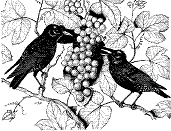Vertebrate Pest Conference: Proceedings

Vertebrate Pest Conference Proceedings: 8th (1978)
Date of this Version
March 1978
Document Type
Article
Abstract
In 1976 and 1977, studies to improve the use of 4-aminopyridine (4-AP), a chemical frightening agent for protecting crops from blackbird damage, were conducted in sunflower in North Dakota, corn in Ohio, grain sorghum in Kansas, and sprouting rice in Arkansas and Texas. Because of the high vulnerability of sunflower, much of the effort was concentrated in this crop, despite the 1976 federal registration of a 4-aminopyridine product, AvitrolR FC Corn Chops-99S, in 14 midwestern states. Hand baiting the perimeter of fields appeared effective in protecting sunflowers from damage by three species of blackbirds, but was ineffective in protecting grain sorghum being damaged by cowbirds. A 1:33 dilution ratio of 4-AP was more effective than the registered 1:99 dilution ratio in protecting field corn. A concerted effort to bait the most vulnerable sunflower fields in a 7-township area with small tractors on baiting lanes did not provide the degree of protection anticipated. In this study about 38% of radio-equipped blackbirds frightened from ripening sunflower fields fed next in equally vulnerable sunflower fields. Good to excellent results were obtained in initial trials with 4-AP for protecting sprouting rice fields. Fair success was obtained using 4-AP formulations for protecting corn and sunflowers from parakeet damage in South America and rice and millet from damage by weavers in Africa.

